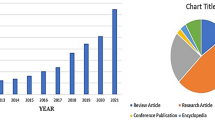Abstract
The current state of the art in light-weight construction for aircraft structures such as seat tracks, is the use of either aluminium or titanium materials. Whereas aluminium seat tracks are light-weight and less expensive, titanium seat tracks offer superior corrosion properties at higher cost. In order to combine the advantages of both materials, a hybrid Ti-AI structure is proposed. To produce such a structure, an appropriate thermal, laser-based brazing process was developed in a joint project of BIAS and their partners from industry. In this paper, the results from this research work will be reported and discussed. On the basis of the development of an appropriate system technology, the process development will be described, focusing on the main influencing parameters of the process on joint properties, which were characterized by metallurgical analyses, hardness testing and static tensile tests. It will be shown that laser beam joining is suitable to produce load-bearing aluminium-titanium-structures.
Similar content being viewed by others
References
Kreimeyer M. and Vollertsen F.: Processing titanium-aluminium hybrid joints for aircraft applications, in: Beyer F. et al. (Eds.): Proceedings of the 3rd International WLT-Conference on Lasers in Manufacturing LIM 2005, Munich, June 2005, pp. 73-78.
Sepold G., Schubert E. and Zerner I.: Laser beam Joining of dissimilar materials, IIW Doc. IV-734-99, 1999.
Chularis A.A., Kolpacheva O.V. and Tomashevskii V.M.: Electron structure and properties of intermetallic compounds in titanium-metal dissimilar joints, Welding International, 1995, vol. 9, no. 10, pp. 812–814.
Yajiang L., Juan W., Peng L. and Jiangwei R.: Microstructure and XRD analysis near the interface of Ti/ Al diffusion bonding, International Journal for the Joining of Materials, 2005, vol. 17, no. 2, pp. 53–57.
Strong A.B. (Ed.): Composites in manufacturing, Dearborn, Society of Manufacturing Engineers, 1991.
Hansen M.: Constitution of binary alloys, McGraw-Hill, New York, 1958.
Lison R.: Verbindungsschweiβen unterschiedlicher Werkstoffe — exemplarisch vorgestellt, Welding of dissimilar materials — presented exemplary, Jahrbuch Schweiβtechnik 99, Deutscher Verlag für Schweiβtechnik, Düsseldorf, 1999 (in German).
Titan kann mit Aluminium verbunden werden (It is possible to join titanium with aluminium), Nippon Aluminium nimmt dünne Kupferlagen und ultraschallbehandeltes Lot. Blick durch die Wirtschaft. Beilage zur Frankfurter Allgemeinen Zeitung, 1993, vol. 36, 1 50 (in German).
Suoda P., Dujak J. and Michalicka P.: Creation of heterogeneous weld joints of titanium- and aluminium-based materials by electron beam welding, Welding Science and Technology, Japan Slovak Welding Symposium, Tatranske Matliare, 1996.
Fuji A., Ameyama K. and North T.H.: Influence of silicon in aluminium on the mechanical properties of titanium/aluminium friction joints, Journal of Materials Science, 1995, vol. 30, no. 20, pp. 5185–5191.
Fuji A., Kimura M., North T.H., Ameyama K. and Aki M.: Mechanical properties of titanium-5083 aluminium alloy friction joints, Materials Science and Technology, 1997, vol. 13, no. 8, pp. 673–678.
Ege E. and Inal O.T.: Stability of interfaces in explosively-welded aluminium titanium laminates, Journal of Materials Science Letters, 2000, vol. 19, no. 17, pp. 1533–1535.
Kreimeyer M., Wagner F., Zerner I. and Sepold G.: Laserstrahlfügen von Aluminium mit Titan unter Verwendung eines optimierten Arbeitskopfs, Laser beam joining of aluminium and titanium by using an optimized working system, Proc. Löt 01, Aachen, DVS-Berichte 212, DVS-Verlag: Düsseldorf, 2001, pp. 317–321 (in German).
Seefeld T., Kreimeyer M., Wagner F. and Sepold G.: Laserstrahlfügen von Mischverbindungen, Laser beam joining of dissimilar materials, 4. Laser-Anwenderforum, Bremen, 2002, pp. 215-224 (in German).
Kreimeyer M., Wagner F. and Vollertsen F.: Laser processing of aluminium-titanium-tailored blanks, Optics and Lasers in Engineering, 2005, vol. 43, no. 9, pp. 1021–1035.
Author information
Authors and Affiliations
Corresponding author
Rights and permissions
About this article
Cite this article
Möller, F., Thomy, C. & Vollertsen, F. Joining Oftitanium-Aluminium Seat Tracks for Aircraft Applications — System Technology and Joint Properties. Weld World 56, 108–114 (2012). https://doi.org/10.1007/BF03321341
Published:
Issue Date:
DOI: https://doi.org/10.1007/BF03321341




